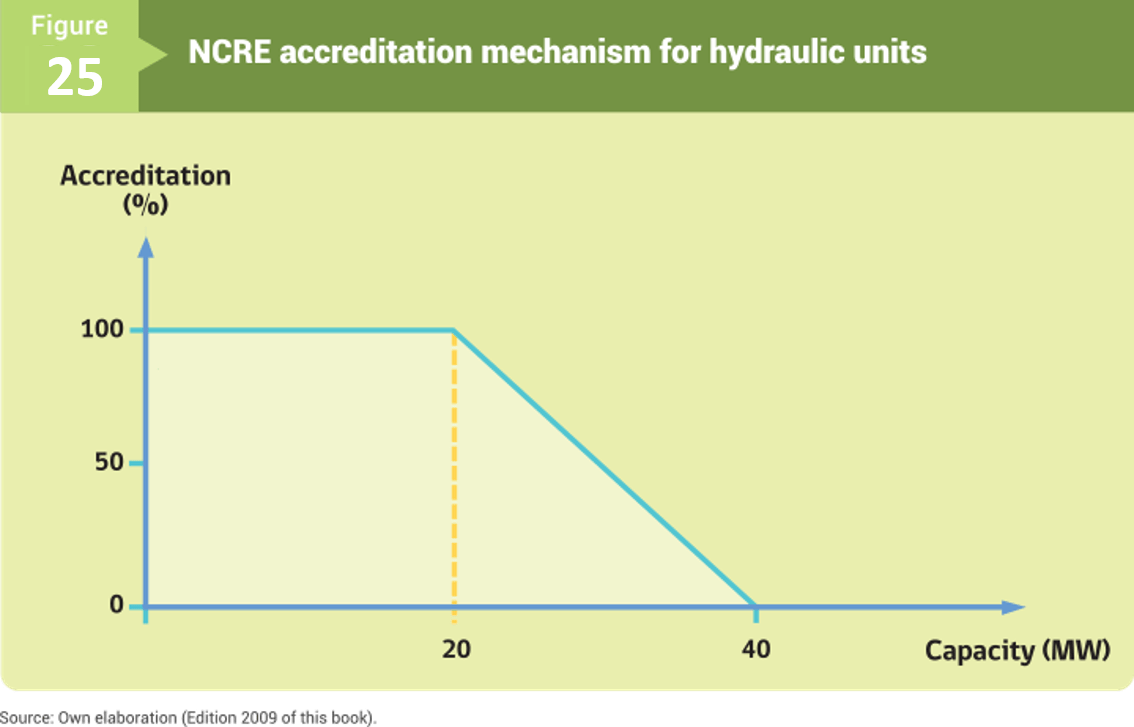4.5. Non-Conventional Renewable Energy Law (Law 20.257 and Law 20.698)
On April 1, 2008, Law 20.257 entered into force, which established an obligation for electricity companies that a percentage of the energy marketed come from NCRE sources 13 and defined a target of 10% a year 2024. However, in October 2013, this was modified to the goal to 20% by 2025 (Law 20.698 of 2013).
Thus, for contracts concluded after August 31, 2007 and before July 1, 2013 (Law 20.257), the obligation was 5% for the years between 2010 and 2014, increasing by 0.5% per year from 2015 until reaching 10% in 2024. However, for contracts entered into after July 1, 2013 (Law 20.698), the obligation was 5% in 2013, with increases of 1% from 2014 until reaching 12% by 2020, and increases of 1.5% from 2021 to 2024, and an increase of 2% to 2025 to reach 20%. The above requirements are presented in Table 6.
 Other important provisions of these laws are presented below:
Other important provisions of these laws are presented below:
- The electricity company that does not prove compliance with the obligation on March 1 following the corresponding calendar year, must pay a fee, whose amount is 0.4 UTM 14 per MWh of deficit in relation to its obligation. If, within the following three years, it again fails to comply with its obligation, the charge is 0.6 UTM for each MWh of deficit.
- Any electricity company that exceeds its non-conventional renewable energy injection obligation may agree to the transfer of its surplus to another electric company, which may be done even between companies of different electric systems.
- It is important to note that compliance with this law is only valid for NCRE produced by installations that have been connected to the SEN as of January 1, 2007.
- It should be noted that the accreditation of NCRE is not limited to projects of less than 20/40 MW and that hydroelectric plants are a case of private treatment. As an example, for a 100 MW wind farm the recognition is for the total energy injected into the system.
- Only for the purposes of the accreditation of the obligation established in the law, are also recognized part of injections from hydroelectric plants whose maximum power is equal to or less than 40 MW, even when hydroelectric projects with a maximum power equal to or greater than 20 MW are not defined as NCRE in the Law. This recognition corresponds to a proportional factor that is null for powers equal to or greater than the indicated power. Figure 25 summarizes the scheme applicable to hydroelectric plants in relation to the recognition of NCRE:

Finally, it is important to note that if the target is not met due to lack of investments in renewable projects, the Ministry of Energy must to carry out annual public tenders for the provision of non-conventional renewable energy blocks to cover the part of the missing obligation [27]. However, as will be seen in the next section, given the strong non-conventional renewable penetration in Chile, the tender is very likely that it will not be necessary to carry out these bids.
Non-conventional renewable generation has far exceeded the quota imposed by the regulation, as shown in Figure 26. For example, the NCRE quota for 2020 is 8% for the supply contracts entered into between August 31st 2007 and July 1, 2013 and 12% for contracts signed after July 1, 2013. In December 2020, these obligations resulted in a goal of 5377 GWh of NCRE energy. However, the actual and recognized NCRE injection by law was much higher, reaching 14634 GWh, that is, 272% over what was demanded [28]. This surplus in relation to the NCRE obligation has resulted in a price collapse of the NCRE attribute, which is no longer a significant source of project financing. Figure 26 presents the annual obligations NCRE and as these have been systematically surpassed in each year.
Figure 26: Compliance with NCRE laws
Source: Own elaboration from Statistical Yearbook of Energy. CNE










